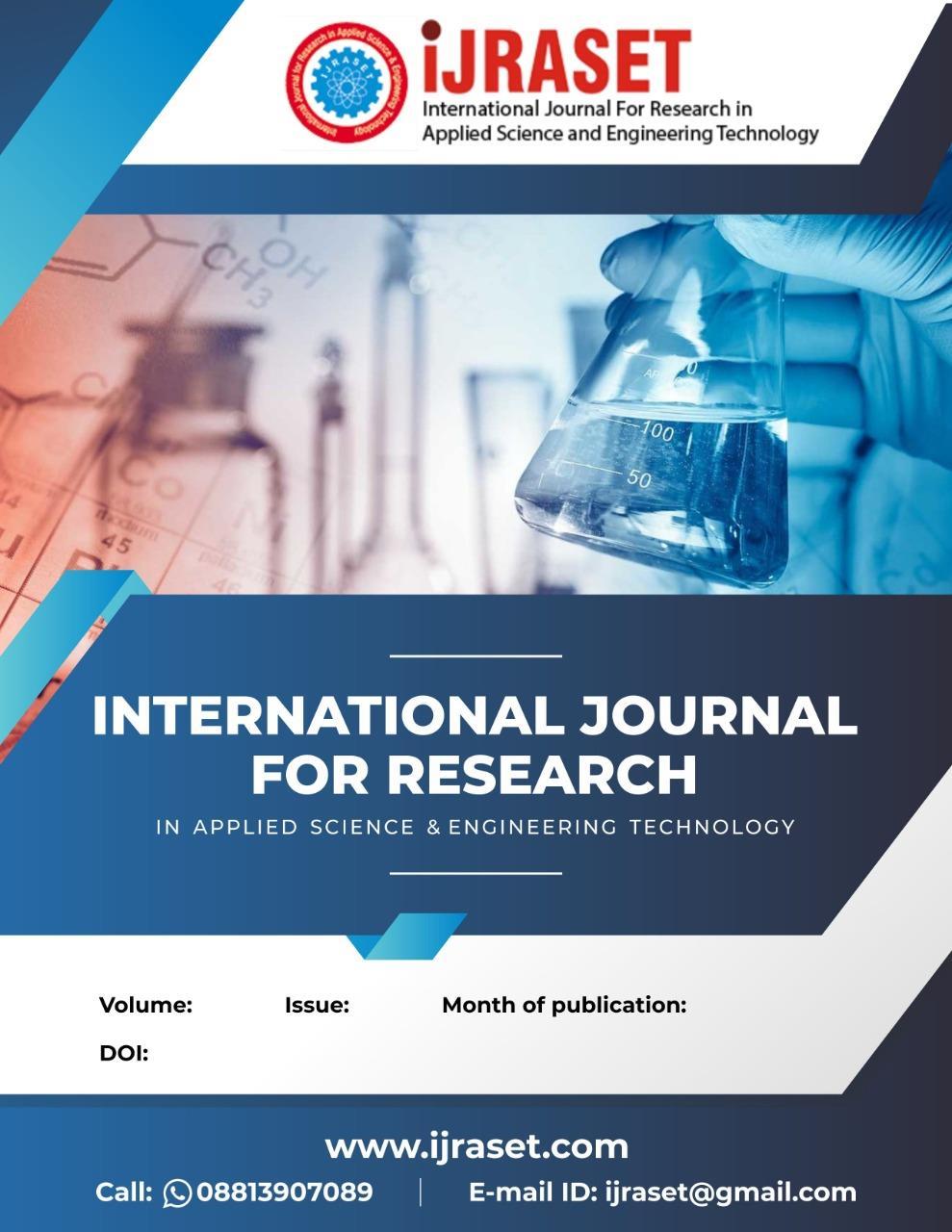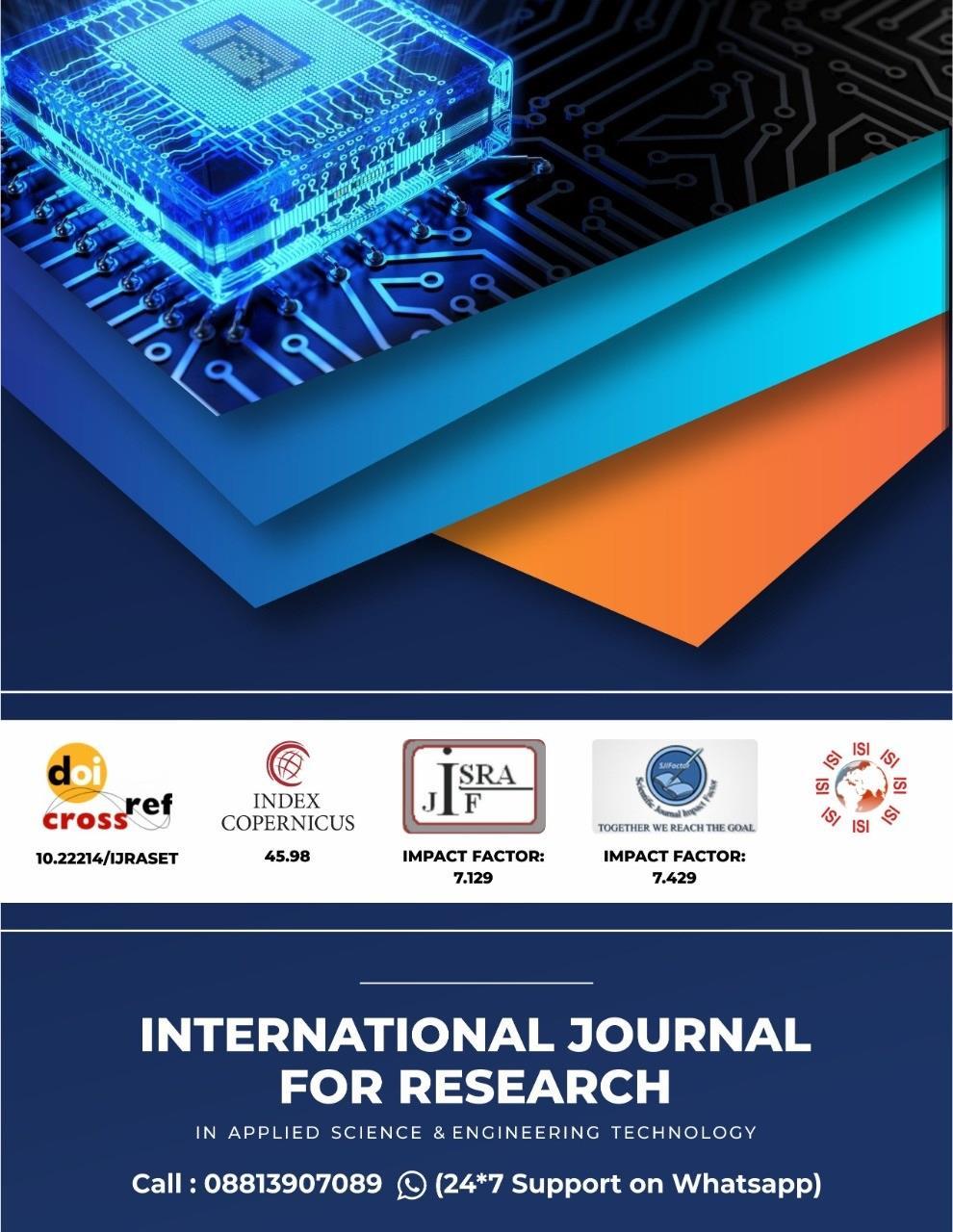https://doi.org/10.22214/ijraset.2023.50225

ISSN: 2321-9653; IC Value: 45.98; SJ Impact Factor: 7.538

Volume 11 Issue IV Apr 2023- Available at www.ijraset.com

https://doi.org/10.22214/ijraset.2023.50225

ISSN: 2321-9653; IC Value: 45.98; SJ Impact Factor: 7.538

Volume 11 Issue IV Apr 2023- Available at www.ijraset.com
Elina Chamama Kamfose1 , Dr. G. Agila2
1Student, Department of Management Studies &Commerce, DMI St Eugene Chibombo Zambia
2Associate Professor Head BCOM A&F Sri Ramakrishna College
Abstract: Poverty reduction has been a major concern in Malawi for a long time. Today, Microfinance has become an important instrument for poverty alleviation in developing countries. This paper aims to assess the Impact of Micro finance activities on Malawi’s economic growth and poverty reduction. The study findings will be of special importance for policy makers and stakeholders who may benefit from these results in improving regulations and strategies to strengthen the microfinance sector as main player in the financial system in Malawi. For this study 70 respondents from microfinance institutions were considered and surveyed using a structured questionnaire and interviews. The data collected is analysed with tables, percentages and diagrams using Microsoft Excel.
Keywords: Microfinance Institutions; Economic growth, Economic growth, Poverty Alleviation, Regulations
A well-functioning financial sector can spur economic growth (Schumpeter, 1912 and Levine, 1997). MFIs design optimal products that distribute funds over macro and micro levels, which in turn contribute to the growth of financial intermediaries. This growth increases households’ access to finance, which in turn allows them to start small businesses that contribute to economic growth. Hermes et al. (2009) argue that, depending on the complement and the rival relationship of microfinance with mainstream banking, the degree and the maturity of the financial sector are shaped which is transferred to growth accordingly. This paper will look at the impact of Microfinance activities in Malawi. It considers answering the question, what is the impact of Microfinance on Economic Growth and Poverty reduction in Malawi?
According to Malawi economic report (African development bank,2019) poverty remains widespread at 51.5%, up to 50.4% in 2010 particularly in rural areas (56.6%)
Formal financial institutions are generally hesitant to lend to low-income households with low income. while households in developing countries have reasonable access to banking services, they have limited access to loans (Tanmeyah, 2013). In this context, it is worth studying the extent of the microfinance industry’s contribution to economic growth and poverty reduction in Malawi. An easy way to comply with IJRASET paper formatting requirements is to use this document as a template and simply type your text into it
The main goal of this study is to understand the effect of MFIs on economic growth and poverty reduction in Malawi. It seeks to examine the role of MFIs in Malawi, and to study their impact on GDP growth in the hope of forming policies related to the microfinance sector.
1) To evaluate the implementation processes of microfinance institutions
2) To evaluate the effectiveness of microfinance as a tool for poverty reduction.
1) World Bank, et. al, 2001 More than 80% of households do not have access to the services of the financial institutions. This is due to the lack of collateral to secure loans from the commercial banks.
2) Anyanwu, et. al, 2004, Mostly commercial banks give out loans to the medium and large enterprises but they are unable to provide for the poor community.
ISSN: 2321-9653; IC Value: 45.98; SJ Impact Factor: 7.538
Volume 11 Issue IV Apr 2023- Available at www.ijraset.com
3) Maksudova, et. al. 2010, It is a well-known fact that one major cause of poverty in developing countries is lack of access to productive capital, with formal financial institutions mostly excluding the poor in their lending activities. Since the 1970s, microfinance has played an important role in decreasing poverty and supporting economic growth. MFIs design optimal products that distribute funds over macro and micro levels, which in turn contribute to the growth of financial intermediaries. Following the success of the Grameen Bank in Bangladesh in reaching the poor, microfinance institutions using group-based lending are increasingly becoming important institutions in breaking the circle of poverty in many developing countries today
4) Ledgewood, et. al. 2000, Microfinance has evolved as an economic development approach intended to benefit low-income women and men. It refers to the provision of financial services to low – income clients, including the self-employed
Research design; The methodology that the study adopted was descriptive research design. Data was collected by interviewing the respondents and a questionnaire which consisted of both open ended and close ended questions to allow respondents to freely express their views. Secondary data was collected from journals.

The table above indicates that most respondents were male and belonging to the age bracket of 30 to 40 years of age and most of them had attained some sort of education.
The study revealed that most poor people are finding it hard to get loan facilities because of the collateral requirements that the poor cannot satisfy and due to the belief that the incentives to repay for the poor are limited given the associated asymmetric information and high monitoring costs of micro individual borrowers.
Formal
ISSN: 2321-9653; IC Value: 45.98; SJ Impact Factor: 7.538

Volume 11 Issue IV Apr 2023- Available at www.ijraset.com
Collected data indicates that 65% of the participants were of the opinion that the current lending requirements are poor and not conducive for economic growth of the rural masses. 35% thought that the requirements were fair considering the economic environment of country.
There has been an increase in the loan portfolio due to the availability of information on the digital platforms according to 87% of the respondents, and 13% disagreed with the statement. The researcher observed that MFI’s have improved their efficiency tremendously through the use of new technologies. Most MFI’s have improved they as they are able to reach out to a large number of people especially in the urban areas. However, the rural poor continue to miss out on easy access to information due to lack of structural network.
It was observed that most micro-credit programmes reach clients just above or just below the poverty line and expanding the client base to poorer households remains a challenge. Johnson and Rogaly et. al. 1997 contend that the appropriateness of micro-credit as a strategy for poverty reduction in the case of the poorest people is questionable.
From the data collected, it is evident that most MFI’s priorities SME’S in giving out loans and as a result most individuals are left out in the cold. Mainly, this is due to repayment conditions which these institutions demand which many individuals fail to meet. MFI’s and mainstream banks can find other means of helping out customers in terms of loan facilities by putting up flexible conditions that can be met by a good number of customers.
ISSN: 2321-9653; IC Value: 45.98; SJ Impact Factor: 7.538

Volume 11 Issue IV Apr 2023- Available at www.ijraset.com
Apart from collateral requirements it was observed that Most institutions with micro credit programs also face several capacity constraints such as under-qualified human resources, inadequate personnel to match the scale of their programs, limited branch networks, inadequate physical assets and transport facilities and inadequate financial resources.
Most respondents felt that most MFI’s do not have well trained staff in the area of credit dispensation and they are unable to handle the technological aspect of it as such they need to undergo different kinds of training so that they can make the most of mobile phones and digital infrastructure that have taken over the traditional way of accessing financial services.
89% of respondents felt that MFIs can use these technology systems to provide mobile financial services and promote digital skills amongst its customers to enable them manage their finances digitally and avail financial services at a click of a button. This will also help microfinance institutions to track down loans and avoid financial loss due to unrecovered loans
The following(“Ho”) null hypothesis is formed
There is no significant impact of microfinance activities on the economic growth and poverty reduction of Malawi over the period through microfinance activities (1995-2019) considering the fact that the number of MFI clients had risen from 27,776 at the end of 2021 to 32,686 in march 2022. ADA et. al.2022
It is recommended that an area of Government policy that can help to rapidly reduce poverty to the barest minimum can be researched into since most of the financial institutions have profit motives and therefore have limitation to give some of the services needed by the very poor (for example grants) to enable them graduate from their present level of poverty.
This study focused on the impact Microfinance has on economic growth and poverty reduction and it was discovered that the impact is minimal as to be almost nonexistent as most people tend to default and they end up getting money from loan sharks which results into more indebt Ness and even in suicide cases as a result of failure to repay.
Data collected would clearly indicate that there is a large unserved demand for microfinance services especially to the urban and rural poor who cannot afford the collaterals demanded by financial institutions. These are the same people that form a large population of Malawi who depend on farming for their survival which could be served by means of a rapid expansion of existing MFIs’ operations.

ISSN: 2321-9653; IC Value: 45.98; SJ Impact Factor: 7.538
Volume 11 Issue IV Apr 2023- Available at www.ijraset.com
[1] Adams, Dale W.; Graham, Douglas H.; Von Pischke, J. D. (1984). Undermining rural development with cheap credit. Boulder, Colorado and London: Westview Press.
[2] Adonsou, F.D., & Sylwester, K. (2017). Growth effect of banks and microfinance: Evidence from developing countries. The Quarterly Review of Economics and Finance, 64, 44-56.
[3] Amin, Md., & Jalal Uddin, S. (2018). Microfinance-economic growth nexus: A case study on Grameen bank in Bangladesh. International Journal of Islamic Economics and Finance, 1(1).
[4] Armendáriz, Beatriz; Morduch, Jonathan (2010) [2005]. The economics of microfinance (2nd Ed.). Cambridge, Massachusetts: MIT Press
[5] Assefa, H., & Meesters. (2013). Competition and the performance of microfinance institutions, applied financial economics. Applied Financial Economics, 23(9).
[6] Bae, H.K., & Goyal, V.K. (2006). Creditor rights, enforcement, and bank loans. The Journal of Finance, 64(2), 823-860.
[7] Barratt, H 2009. Methods of sampling from a population. Retrieved from https://www.healthknowledge.org.uk/public-health-textbook/research-methods/1aepidemiology/methods-of-sampling-population
[8] Bateman, Milford (2010). Why doesn't microfinance work? The destructive rise of local neoliberalism. London: Zed Books.
[9] Bernard, H. R., Bernard, H. R. 2012. Social research methods: Qualitative and quantitative approaches. Sage.
[10] Branch, Brian; Klaehn, Janette (2002). Striking the balance in microfinance: a practical guide to mobilizing savings. Washington, DC: Published by Pact Publications for World Council of Credit Unions.
[11] Bryman, A. (2012). Social Research Methods. Oxford, United Kingdom: Oxford
[12] Chowdhury, A. (2009). Microfinance as a poverty reduction tool a critical assessment. United Nations: Department of Economic and Social Affairs, 89, 1-15.
[13] De Mariz, Frederic; Reille, Xavier; Rozas, Daniel (July 2011). Discovering Limits. Global Microfinance Valuation Survey 2011, Washington DC: Consultative Group to Assist the Poor (CGAP) World Bank.
[14] Dichter, Thomas; Harper, Malcolm (2007). What's wrong with microfinance? Rugby, Warwickshire, UK: Practical Action Publishing.
